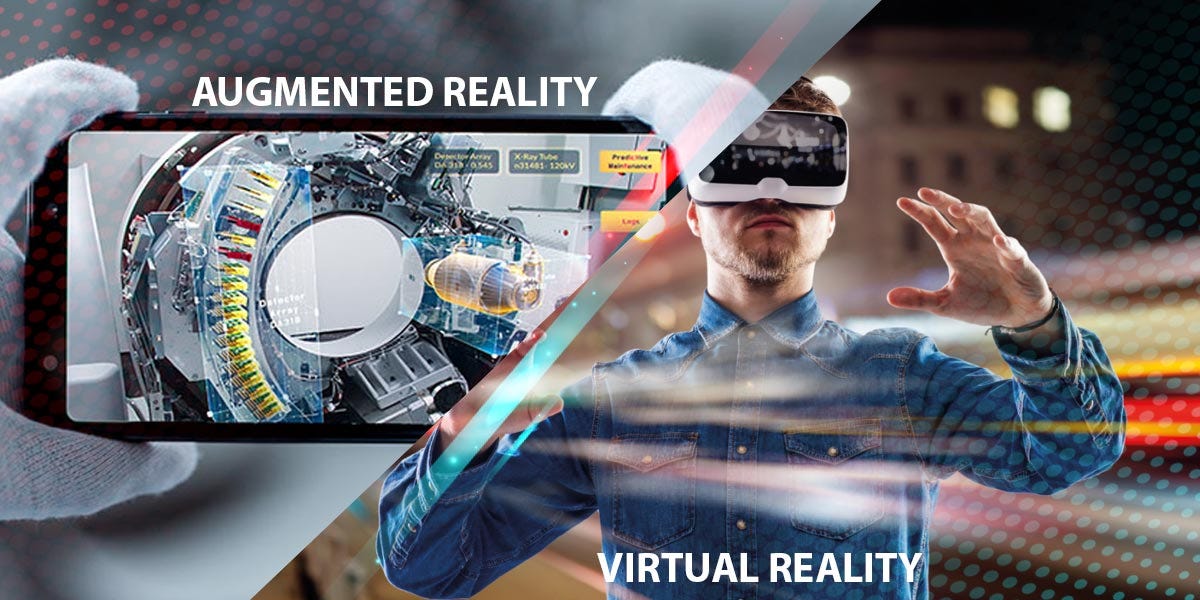Towven.com – The digital world is no longer confined to screens; it’s increasingly blending with our physical reality.
Augmented reality (AR) emerges as a revolutionary technology that seamlessly overlays computer-generated elements onto the real world, creating an enriched and interactive experience.
Unlike virtual reality (VR) which immerses users in entirely simulated environments, AR enhances our perception of the real world by adding digital information, visuals, and sounds.
This article delves into the captivating world of augmented reality (AR), exploring its core principles, diverse applications, and the potential it holds for transforming various industries and our interactions with the world around us.
Beyond the Screen: Unveiling the Core Principles of Augmented Reality (AR)
Augmented reality (AR) departs from traditional screen-based experiences by seamlessly integrating digital elements with the physical world. This captivating experience is achieved through several key principles:
-
Real-World Environment: AR leverages the user’s physical environment as the primary canvas. Unlike VR which creates entirely simulated worlds, AR builds upon the real world.
-
Computer-Generated Content: AR overlays digital information – visuals, sounds, and text – onto the real world in real-time. This digital content can be static or dynamic, responding to the user’s actions and surroundings.
-
Registration and Tracking: Accurate registration and tracking are crucial for a seamless AR experience. AR systems utilize various technologies, like cameras and sensors, to understand the user’s position and orientation in the real world and precisely overlay digital content onto the user’s view.
-
User Interaction: AR experiences can be interactive, allowing users to manipulate and interact with the digital content overlaid on the real world. This interaction can be achieved through touchscreens, voice commands, or gesture recognition.
These core principles work together to create an immersive and interactive experience, blurring the lines between the physical and digital worlds.
A Tapestry of Applications: Exploring the Diverse Uses of Augmented Reality (AR)
Augmented reality (AR) is not just for entertainment; it offers a multitude of applications across various sectors:
-
Gaming: AR can transform mobile gaming experiences by integrating virtual elements with the real world. Players can interact with characters and objects in their physical environment, creating a more immersive and interactive gameplay experience.
-
Education and Training: AR can enhance learning by overlaying digital information on physical objects or environments. This allows students to visualize complex concepts, explore historical sites in an interactive way, and practice skills in a safe and controlled environment.
-
Retail: AR allows customers to virtually try on clothes or furniture in their homes before purchasing, improving the shopping experience and reducing returns.
-
Manufacturing and Maintenance: AR can provide step-by-step instructions for complex assembly processes, overlaying instructions onto machinery or equipment for technicians. It can also facilitate remote maintenance by allowing experts to see what a technician sees through a live video feed with additional AR overlays.
-
Navigation and Exploration: AR can be used to provide turn-by-turn navigation with real-time information overlaid on the user’s view. It can also be used for location-based information, displaying historical facts, restaurant reviews, or points of interest as users explore their surroundings.
-
Healthcare: AR can assist surgeons by overlaying vital information such as patient anatomy or medical scans onto the real world during surgery. It can also be used for patient education and therapy.
These are just a few examples of the diverse applications of augmented reality (AR).
As AR technology continues to evolve and become more accessible, we can expect to see even more innovative applications emerge in the years to come.
Beyond the Hype: Considerations and Challenges of Augmented Reality (AR)
While augmented reality (AR) offers immense potential, there are some considerations and challenges to address:
-
Maturity of Technology: AR technology is still evolving, and some challenges remain, such as ensuring seamless registration and tracking, and developing user interfaces that are intuitive and comfortable for extended use.
-
Device Compatibility: AR experiences are often limited to specific devices like smartphones or tablets. As the technology matures, we can expect broader device compatibility and standalone AR glasses.
-
Privacy Concerns: The collection and use of user data in AR applications raises privacy concerns. Robust privacy protections are essential to ensure user trust.
-
Safety Concerns: AR experiences can be distracting, particularly when used while walking or driving. It’s important to establish safety guidelines and ensure users remain aware of their surroundings.







